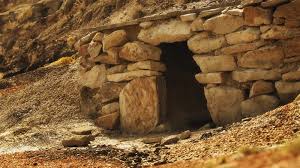The heart of Easter lies in his words, “the new covenant between God and his people.”
Passover and the New Covenant
To put this new covenant in context we must look at history. Long before Jesus was born, God made other covenants with His people (the Israelites) – some to multiply them, some to bless them, and some to give them land. All along the way, God required believers to recognize their sinful nature, confess their sins, ask for forgiveness for their sins, and offer specific animals to the priests as sacrifices for their sins. Their religious observance of Passover included sacrificing unblemished lambs, just as the Israelites had done when they painted their doorposts with the lambs’ blood the actual night of Passover – when Moses led God’s people out of Egypt (see Exodus 12:11-13).
The sacrificial lamb was a significant part of sparing the lives of the Isrealites on Passover as well as in future remembrances of the event. God gave Moses and Aaron specific instructions on how to honor God with annual Passover celebrations. Lamb was the pinnacle of the Passover meal (and still is). The lambs were to be without blemish and even lived with the families for several days before they were sacrificed, adding to the understanding that the ultimate sacrifice was close to the hearts of those whose sins were atoned for.




